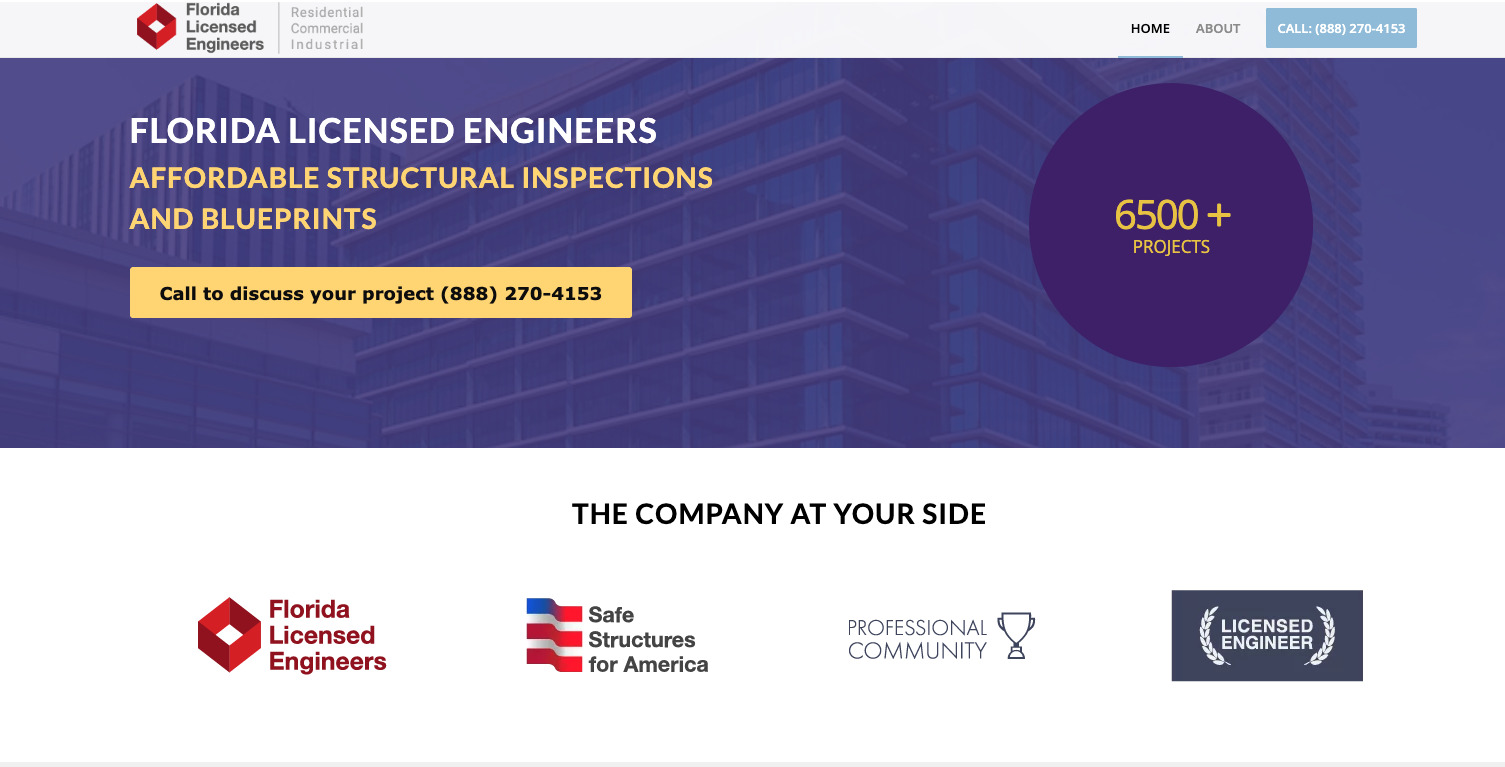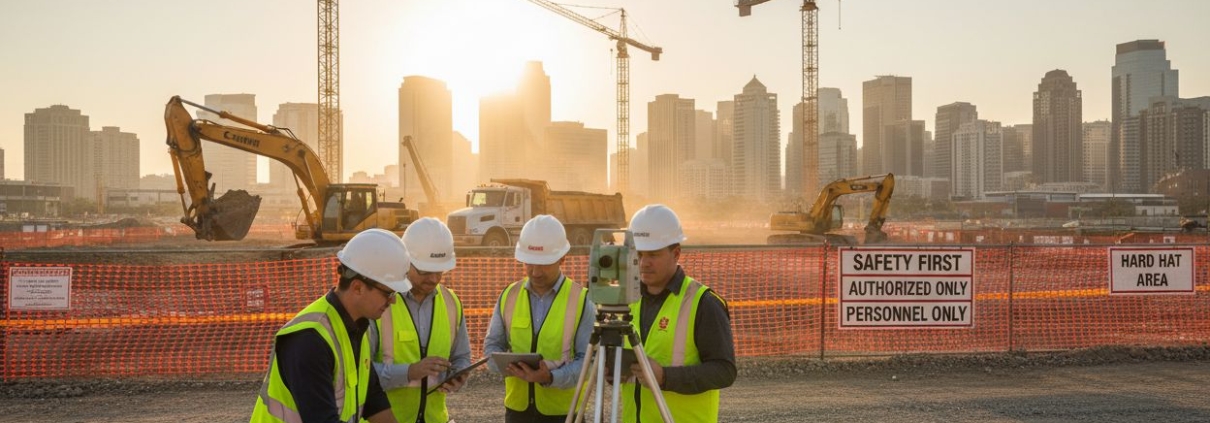Master Civil Engineering Workflow for Smooth Project Delivery
Did you know that construction delays can increase total project costs by up to 20 percent? Careful planning in civil engineering prevents these setbacks and protects your budget. Every successful build starts with clear requirements, detailed site assessments, and strict regulatory checks. By following proven steps for planning and documentation, you greatly improve your chances for a smooth project from the first survey to the final certification.
Table of Contents
- Step 1: Define Project Requirements And Site Conditions
- Step 2: Develop Comprehensive Engineering Plans And Reports
- Step 3: Coordinate With Permitting And Regulatory Agencies
- Step 4: Implement Civil Engineering Solutions On-Site
- Step 5: Verify Compliance With Inspections And Certifications
Quick Summary
| Key Point | Explanation |
|---|---|
| 1. Thoroughly define project requirements | Collaborate with stakeholders to clarify project goals, timelines, and budget constraints. This sets a strong foundation for project strategy. |
| 2. Conduct comprehensive site investigations | Assess site conditions—terrain, soil, and groundwater—to anticipate challenges and inform design approaches before construction begins. |
| 3. Develop detailed engineering plans | Create civil drawings and method statements to provide clear blueprints and systematic procedures that comply with project specifications. |
| 4. Coordinate with regulatory agencies | Identify all relevant agencies early and prepare necessary documentation to facilitate a smooth permitting process and compliance. |
| 5. Implement quality control during construction | Conduct regular inspections and maintain documentation to ensure adherence to original specifications and address any nonconformance swiftly. |
Step 1: Define project requirements and site conditions
In civil engineering, understanding your project requirements and site conditions is like creating a detailed roadmap before an important journey. According to research from Valispace, effective requirements management involves meticulously defining and documenting project needs from start to finish.
Your first task is gathering comprehensive information about the project scope. This means sitting down with stakeholders and creating a crystal clear picture of project goals, budget constraints, timeline expectations, and specific technical requirements. Think of this as building a foundation not just for your structure but for your entire project strategy.
To assess site conditions thoroughly, you will want to conduct a detailed site investigation. As guidelines from BS 5930:2015 recommend, this involves understanding site characteristics that could impact design and construction. Your investigation should cover terrain analysis, soil composition, groundwater levels, potential environmental restrictions, and existing infrastructure.
Pro Tip: Always document every detail during site investigations. Small overlooked factors can create massive challenges later in the project.
During this phase, collect geological surveys, topographical maps, and environmental impact assessments. Engage geotechnical engineers who can provide precise insights into ground conditions. Their expertise will help you anticipate potential challenges and design appropriate solutions before breaking ground.
By completing this requirements and site condition assessment, you are setting yourself up for smoother project execution. Next, you will translate these findings into comprehensive design specifications that guide your entire engineering approach.
Step 2: Develop comprehensive engineering plans and reports
After defining project requirements and site conditions, your next critical step is developing comprehensive engineering plans and reports that will serve as the blueprint for your entire project. According to research on civil drawings, these technical documents provide a detailed picture of construction site elements essential for precise engineering work.
Start by creating civil drawings that capture every nuanced aspect of your project. These drawings should meticulously document grading specifications, landscaping details, site layout, and critical infrastructure components. Think of these plans as your project’s visual roadmap a comprehensive guide that communicates complex technical information clearly to all stakeholders.
As recommended by experts in construction project management, developing a method statement becomes crucial during this phase. According to method statement guidelines, this document should systematically outline the processes for preparing, designing, coordinating, and implementing your engineering works while ensuring strict compliance with project specifications and industry codes.
Pro Tip: Use digital drafting tools and collaborate closely with multidisciplinary teams to create the most accurate and comprehensive engineering plans possible.
Your engineering reports should include detailed technical specifications, material requirements, structural calculations, environmental impact assessments, and risk management strategies.
 Incorporate data from your earlier site investigations to demonstrate how your design responds to specific site conditions.
Incorporate data from your earlier site investigations to demonstrate how your design responds to specific site conditions.
By developing thorough and precise engineering plans and reports, you are establishing a solid foundation for successful project execution. Your next step will involve reviewing and validating these documents with key project stakeholders to ensure complete alignment and understanding.
Step 3: Coordinate with permitting and regulatory agencies
Navigating the complex world of permitting and regulatory compliance is a crucial step in your civil engineering project. Understanding and managing regulatory requirements can mean the difference between a smooth project launch and potential costly delays.
Begin by identifying all relevant regulatory agencies that will oversee your specific project. According to the Construction Design and Management Regulations, certain mandatory documents must be prepared in advance. These include detailed project notifications, comprehensive pre construction information, and thorough health and safety plans that demonstrate your commitment to regulatory standards.
Preparing environmental documentation becomes paramount during this phase. Environmental impact assessments are critical tools that help you evaluate and mitigate potential environmental consequences of your construction project. These assessments not only ensure regulatory compliance but also demonstrate your professional responsibility toward sustainable development.
Pro Tip: Proactively schedule meetings with local regulatory representatives to understand specific requirements unique to your project location and scope.
Develop a systematic approach to document preparation. Collect all necessary technical drawings, site plans, environmental studies, and safety protocols well in advance of submission. Organize these documents meticulously to expedite the review process and minimize potential requests for additional information.
By carefully coordinating with permitting and regulatory agencies, you are establishing a transparent and professional foundation for your project. Your next step involves compiling a comprehensive submission package that addresses all potential regulatory concerns with clarity and precision.
Step 4: Implement civil engineering solutions on-site
With your plans and permits in place, it is time to transition from theoretical design to practical implementation. According to research from site planning experts, effective on-site implementation requires adaptive strategies that address unpredictable site conditions and complex regulatory requirements.
Begin by conducting a comprehensive site walkthrough with your entire project team. This initial assessment allows you to verify that your existing plans align with actual site conditions. As insights from project constraint analysis suggest, understanding site specific factors will help you accommodate technological innovations and achieve a functional final product.
Establish clear communication protocols among all on site teams. Create daily briefing sessions where each team shares progress updates, potential challenges, and immediate action items. This approach ensures everyone remains aligned with project objectives and can quickly respond to unexpected site conditions.
Pro Tip: Maintain a real time digital documentation system that tracks every modification and decision made during on site implementation.
Implement robust quality control measures. This means conducting regular inspections, documenting work progress, and immediately addressing any deviations from your original engineering plans. Your goal is to maintain precision while remaining flexible enough to adapt to real world site challenges.
By carefully implementing your civil engineering solutions on site, you are transforming detailed plans into tangible infrastructure.
Your next step involves continuous monitoring and documentation to ensure project success and regulatory compliance.
Step 5: Verify compliance with inspections and certifications
As you approach the critical phase of project verification, your primary goal is ensuring every aspect of the project meets rigorous professional standards. According to construction management principles, this stage involves carefully controlling project scope, time, cost, and quality to guarantee full regulatory compliance.
Initiate the verification process by scheduling comprehensive inspections with certified professionals who will systematically evaluate your project against original specifications. Each inspection serves as a critical checkpoint where your actual implementation is measured against approved design standards and regulatory requirements.
Prepare meticulously for potential Non Conformance Reports, which document any deviations from approved specifications or drawings. When these reports are issued, view them not as setbacks but as opportunities for immediate corrective action and quality improvement.
Pro Tip: Create a standardized tracking system for inspection findings that allows rapid documentation and resolution of any compliance issues.
Develop a proactive approach to certification. This means maintaining detailed documentation of every stage of your project, including original plans, modification records, material specifications, and inspection results. Your documentation should tell a clear and comprehensive story of how your project meets or exceeds all required standards.
By rigorously verifying compliance through systematic inspections and maintaining meticulous documentation, you are protecting the integrity of your project and demonstrating professional excellence. Your final step will involve compiling a complete certification portfolio that serves as your project’s quality assurance testament.
![]()
Here’s a summary of essential tasks and documentation for each project phase:
| Phase | Key Tasks | Primary Documentation |
|---|---|---|
| Define Requirements & Site | Gather stakeholder inputs Assess site conditions |
Project scope statement Geotechnical reports |
| Develop Plans & Reports | Draft civil drawings Write method statement |
Engineering plans Technical specifications |
| Coordinate Permits & Regulatory | Identify agencies Prepare permits Compile studies |
Permit applications Environmental assessments |
| Implement Solutions On-Site | Conduct walkthroughs Set communication Quality control |
Daily logs Inspection reports |
| Verify Compliance & Certs | Schedule inspections Manage NCRs Track certifications |
Inspection forms Certification portfolio |
Streamline Your Civil Engineering Projects for Guaranteed Success
Mastering the civil engineering workflow can feel overwhelming when faced with complex site assessments, detailed engineering plans, and strict regulatory approvals. This article highlights the pain points of managing multiple stakeholders, anticipating site challenges, and ensuring seamless project delivery without costly delays. If you want to eliminate uncertainty and achieve clear communication throughout your project phases, understanding the importance of thorough documentation and quality control is key.
Discover how partnering with expert engineers can transform your approach to drainage, grading, utility planning, and flood mitigation. Our team delivers comprehensive civil engineering services that align perfectly with your project goals, including actionable site plans, no rise certificates, and elevation certifications. We understand your need for real-time insights and adaptive site solutions that protect your investment and timeline.
Ready to take control of your project’s success with trusted engineering expertise? Explore the latest insights and resources at Uncategorized Archives – Pennsylvania Licensed Engineers.

Partner with us at Florida Licensed Engineers to unlock smoother project execution starting today. Benefit from accurate inspections, precise blueprints, and efficient permitting assistance tailored for residential and commercial developments. Don’t let regulatory challenges or design uncertainties hold you back. Contact us now to secure the expertise that ensures your civil engineering projects are delivered on time and within budget.
Frequently Asked Questions
How do I define project requirements effectively for civil engineering?
Defining project requirements involves gathering detailed information from all stakeholders about goals, budget, timeline, and technical needs. Sit down with your team to document these elements clearly before moving forward.
What steps should I take to assess site conditions for my civil engineering project?
Conduct a thorough site investigation, including terrain analysis and soil composition evaluations. Document your findings meticulously to capture every detail, which will help you avoid major issues during construction.
What are the best practices for developing engineering plans and reports?
Start by creating detailed civil drawings that outline grading specifications and site layouts. It’s essential to collaborate with multidisciplinary teams to ensure that your engineering documents are comprehensive and meet all project standards.
How can I effectively coordinate with permitting and regulatory agencies?
Identify all relevant regulatory agencies early in the project and prepare required documentation, such as environmental impact assessments. Schedule proactive meetings to discuss specific requirements unique to your project and streamline the approval process.
What measures should I implement to ensure quality during on-site civil engineering work?
Establish robust communication protocols among your project teams and conduct regular inspections to track work progress. Implement a real-time digital documentation system to enhance quality control and keep everyone aligned on project objectives.
How do I prepare for inspections and certifications in civil engineering projects?
Schedule comprehensive inspections with certified professionals who can evaluate your project against established specifications. Maintain meticulous documentation throughout the project to facilitate a smooth certification process and address any potential non-conformance reports quickly.




